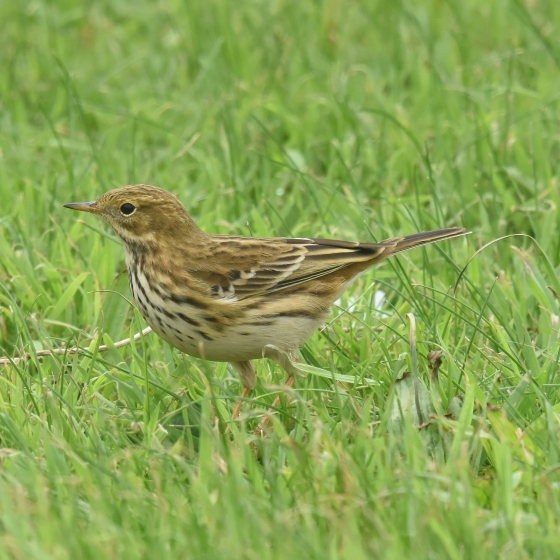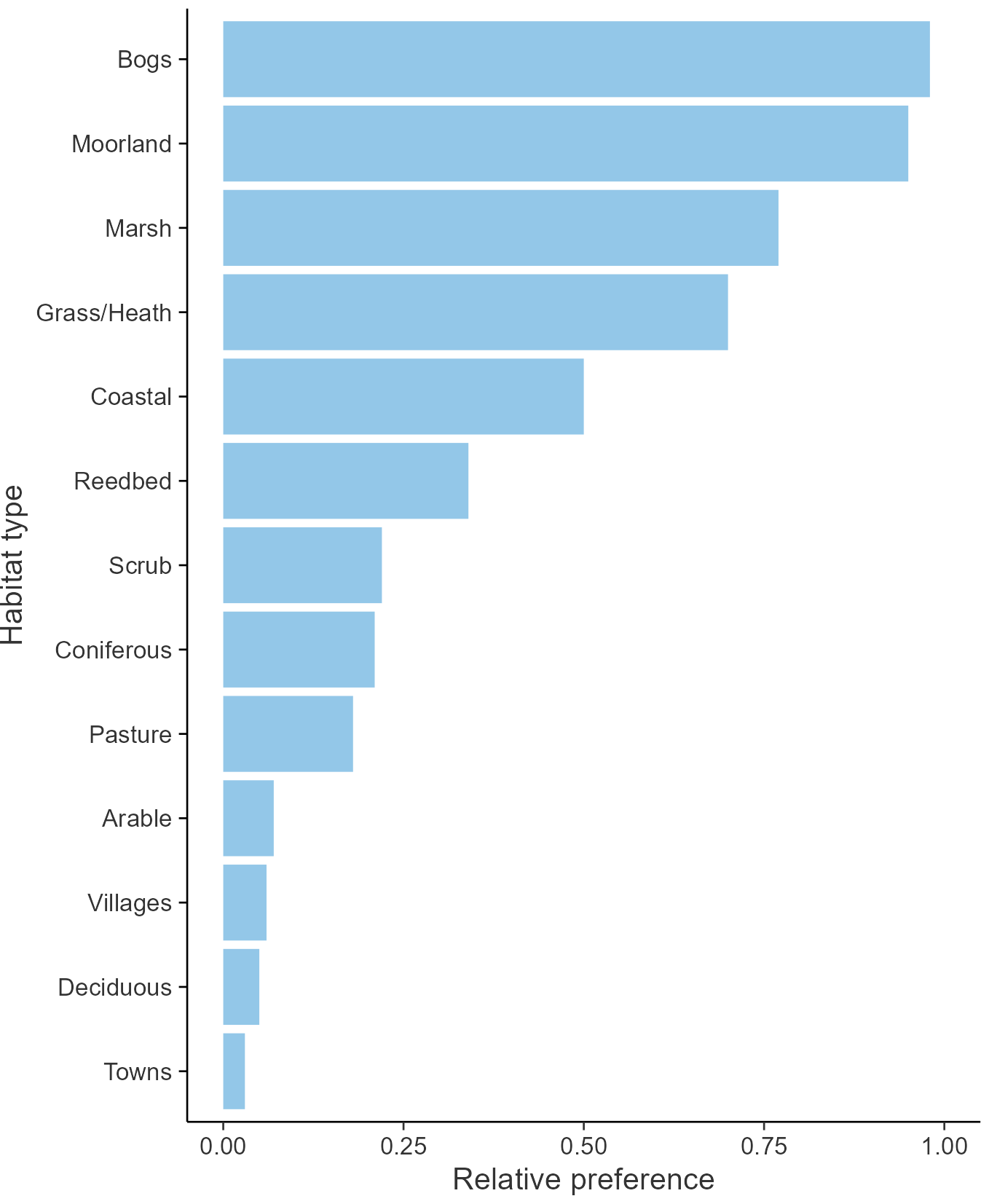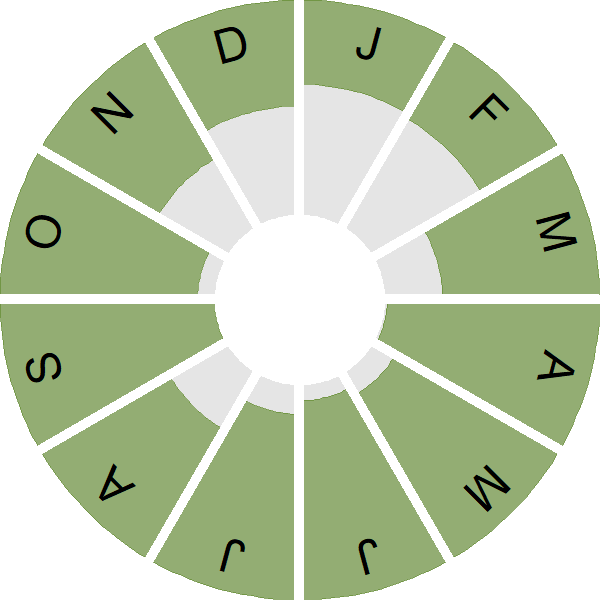Meadow Pipit

Introduction
A bird of our grasslands, uplands and saltmarshes, the streaky, brown and pink-legged Meadow Pipit is easy to overlook.
The Meadow Pipit is a very common bird found across Britain & Ireland in our wilder places. It is at its most obvious during the summer when it delivers its song in a long parachuting descent. During the winter months, some of our breeding birds leave the UK for southern Europe and North Africa and in the autumn it is amongst our most visible diurnal migrants. At this time flocks of birds, thousands strong comprised of British and northern European Meadow Pipits, head south over migration watchpoints. Some Meadow Pipits that breed elsewhere in Europe also spend their winters in Britain & Ireland.
Meadow Pipits typically produce two clutches a year. Their breeding numbers have steadily declined in the UK since the mid-1970s for reasons that are not fully understood.
- Our Trends Explorer gives you the latest insight into how this species' population is changing.

Key Stats
Identification
ID Videos
This section features BTO training videos headlining this species, or featuring it as a potential confusion species.
Meadow Pipit, Tree Pipit & Skylark
Rock Pipit and Water Pipit
Songs and Calls
Song:
Call:
Status and Trends
Conservation Status
Population Change
The CBC/BBS trend has been downward since the mid 1970s. Moorland, the key Meadow Pipit habitat, was not covered well by the CBC, leading to some doubt about the significance of the early results for this species, but BBS now provides more representative monitoring that, in England at least, confirms the picture presented by CBC. As a result of the declines, the species has accordingly been moved from the green to the amber list. The BBS map of change in relative density between 1994-96 and 2007-09 indicates that the species decreased over that period throughout the core of its UK range in Scotland, Northern Ireland and northern England but that numbers increased in some southern regions. However, more recent BBS data shows subsequent increases have occurred in Scotland (over the period 2008-2018). There has been a decline across Europe since 1980 (PECBMS: PECBMS 2020a>); see also Lehikoinen et al. 2014).
Distribution
In winter, Meadow Pipits are widely distributed across Britain and Ireland with absence mostly confined to the highest ground. Densities are high throughout Ireland but in Britain high densities are largely confined to the coastal fringe and the Fens. By contrast, in the breeding season, Meadow Pipits are widespread in the north and west but patchily distributed in the southern English lowlands, with highest densities in upland areas.
Occupied 10-km squares in UK
or view it on Bird Atlas Mapstore.
or view it on Bird Atlas Mapstore.
European Distribution Map
Distribution Change
Small range losses mask more signficant breeding population declines in both Britain and Ireland.
Change in occupied 10-km squares in the UK
or view it on Bird Atlas Mapstore.
or view it on Bird Atlas Mapstore.
Seasonality
Meadow Pipit is recorded throughout the year, with noticeable peaks in reporting in summer and during autumn passage; in winter can be harder to see when skulking in fields and marshes.
Weekly pattern of occurrence
The graph shows when the species is present in the UK, with taller bars indicating a higher likelihood of encountering the species in appropriate regions and habitats.

Habitats
Breeding season habitats
Relative frequency by habitat
The graph shows the habitats occupied in the breeding season, with the most utilised habitats shown at the top. Bars of similar size indicate the species is equally likely to be recorded in those habitats.

Movement
Britain & Ireland movement
Foreign locations of birds ringed or recovered in Britain & Ireland
Dots show the foreign destinations of birds ringed in Britain & Ireland, and the origins of birds ringed overseas that were subsequently recaptured, resighted or found dead in Britain & Ireland. Dot colours indicate the time of year that the species was present at the location.
- Winter (Nov-Feb)
- Spring (Mar-Apr)
- Summer (May-Jul)
- Autumn (Aug-Oct)

European movements
EuroBirdPortal uses birdwatcher's records, such as those logged in BirdTrack to map the flows of birds as they arrive and depart Europe. See maps for this species here.
The Eurasian-African Migration Atlas shows movements of individual birds ringed or recovered in Europe. See maps for this species here.
Biology
Productivity and Nesting
Nesting timing
Egg measurements
Clutch Size
Incubation
Fledging
Survival and Longevity
Survival is shown as the proportion of birds surviving from one year to the next and is derived from bird ringing data. It can also be used to estimate how long birds typically live.
View number ringed each year in the Online Ringing Report.
lifespan
Survival of adults
Biometrics
Wing length and body weights are from live birds (source).
Wing length
Body weight
Ring Size
Classification, names and codes
Classification and Codes
- Order: Passeriformes
- Family: Motacillidae
- Scientific name: Anthus pratensis
- Authority: Linnaeus, 1758
- BTO 2-letter code: MP
- BTO 5-letter code: MEAPI
- Euring code number: 10110
Alternate species names
- Catalan: titella
- Czech: linduška lucní
- Danish: Engpiber
- Dutch: Graspieper
- Estonian: sookiur
- Finnish: niittykirvinen
- French: Pipit farlouse
- Gaelic: Riabhag-mhonaidh
- German: Wiesenpieper
- Hungarian: réti pityer
- Icelandic: Þúfutittlingur
- Irish: Riabhóg Mhóna
- Italian: Pispola
- Latvian: plavu cipste
- Lithuanian: pievinis kalviukas
- Norwegian: Heipiplerke
- Polish: swiergotek lakowy
- Portuguese: petinha-dos-prados
- Slovak: labtuška lúcna
- Slovenian: travniška cipa
- Spanish: Bisbita pratense
- Swedish: ängspiplärka
- Welsh: Corhedydd y Waun
- English folkname(s): Titlark, Hill Sparrow, Mosscheeper
Research
Causes of Change and Solutions
Causes of change
The causes of changes for Meadow Pipit are unclear.
Further information on causes of change
Losses of marginal land from parts of the breeding range have been linked to the decline (Gibbons et al. 1993). Changes to grazing regimes can influence breeding abundance (see Conservation Actions section, below) which could potentially have driven UK trends but this has not been proven. Nest failure rates during the chick stage have declined, which may reflect the loss of birds from suboptimal habitat. The number of fledglings per breeding attempt increased during the 1990s but has since fallen to slightly below the 1968 rate. Meadow Pipit abundance is positively correlated with soil moisture and negatively correlated with temperature (at the level of both macroclimate and microclimate) and future climate change may cause the species to become increasingly restricted to suitable areas on cooler slopes (Massimino et al. 2020); whilst this study did not examine past declines it is feasible therefore that climate change could also have contributed at least partly to the observed declines.
Meadow Pipits are partial migrants and it has also been suggested that conditions on the Iberian wintering grounds may also have contributed to the declines (Gibbons et al. 1993).
Information about conservation actions
The Meadow Pipit has been declining since the mid 1970s and the causes of this decline are unclear.
Experiments in central Scotland (Evans et al. 2006; Vandenberghe et al. 2009; Malm et al. 2020) have shown that Meadow Pipit breeding abundance can be improved by reduced grazing intensity and by mixing cattle and sheep, which provides better foraging conditions than intensive sheep-dominated grazing regimes, and improves breeding productivity.
Preventing or reducing losses of marginal land in upland areas (to intensive sheep farming or other uses) will also help ensure suitable habitat continues to be available to Meadow Pipits. Conservation management to create the optimum habitat in UK uplands should aim to provide a mosaic of heather, bog and grassland (Vanhinsberg & Chamberlain 2001). Meadow Pipit density declines at higher levels of heather cover, but increases with grass cover (Smith et al. 2001). Pipit density reaches a maximum when grass covers between 40% and 60% of a 1 km square (Vanhinsberg & Chamberlain 2001).
Focusing future habitat protection and management actions towards areas of suitable habitat on the cooler slopes of upland areas should also be considered where practical as this may help buffer Meadow Pipits and other upland species against the possible future effects of climate change (Massimino et al. 2020)

